Can NJ cash in on World Cup by learning from mistakes of hosting Super Bowl in 2014?
- Oops!Something went wrong.Please try again later.
It has been a decade since the National Football League rolled into MetLife Stadium for Super Bowl XLVIII, but for those around East Rutherford, the cloud of missed opportunities and mistakes lingers.
Now, New Jersey has a chance to show what it's learned as it prepares to host the biggest event in global sports. With the announcement that the final match of the FIFA World Cup 2026 will be played at MetLife, attention is now on New Jersey Transit to perform effectively and area businesses to make the most of the economic opportunities the tournament could bring.
The official host name for the World Cup is the “New York/New Jersey Host City,” though so far the financing and the stadium have been provided solely by the Garden State. Making sure that New York pays its fair share is something that former East Rutherford Mayor James Casella stressed was important, given the way things played out with the Super Bowl 10 years ago.
Story continues below photo gallery
He noted that due to resources like state police and infrastructure work, hosting major events is “very costly” and that during the Super Bowl, New York “didn’t contribute anything.”
“They got a lot of events over in New York City, and New Jersey was kind of left behind,” Casella said. Gov. Phil Murphy is "obviously talking a lot about this so I think that that's a good thing, but I think New Jersey winds up being second fiddle to New York City.”
Casella also pointed out that in the case of the Super Bowl, national attention was focused on New York and the NFL did nothing to dissuade that, with announcers referencing the city across the river and helicopter shots featuring the Manhattan skyline.
Even the official host title puts New Jersey second, even though the stadium is here and New Jersey comes first alphabetically. Making sure that the Garden State is part of the brand is essential to make the event successful for everyone involved, Casella said, noting that Murphy is the “biggest cheerleader for this.”
“The game is in New Jersey. That needs to be emphasized, not New York. You can have all your cocktail parties or whatever but the game is in New Jersey,” he said. “I think New Jersey will do a great job with what they need to do... I just hope that it works out better than the Super Bowl.”
Embracing New York as a partner
But leaning into the New York angle might work to the region’s advantage, said Jim Kirkos, president of the Meadowlands Chamber of Commerce.
“We have to recognize we're never going to be outside of the shadow of New York City and we can either consider it to be a shadow, or we can consider it to be an asset," he said. "I tend to want to say it's an asset being this close to the greatest city in the world.”
Kirkos said that the chamber will market activities in the area for tourists, including Big Snow and the theme and water parks at American Dream mall. He noted that the region will benefit from a mobility plan to bring people across the river.
He said the chamber will have to embrace the opportunities from partnering with a global powerhouse like New York.
“How will we use that asset? How will we market that asset? How will we let people know all of those destination assets that are in our region?" Kirkos said. "If we do that job, we'll get our fair share of business. Will we get as much as New York? I'm not sure. Will we get a lot? We can.”
How well can NJ Transit perform?
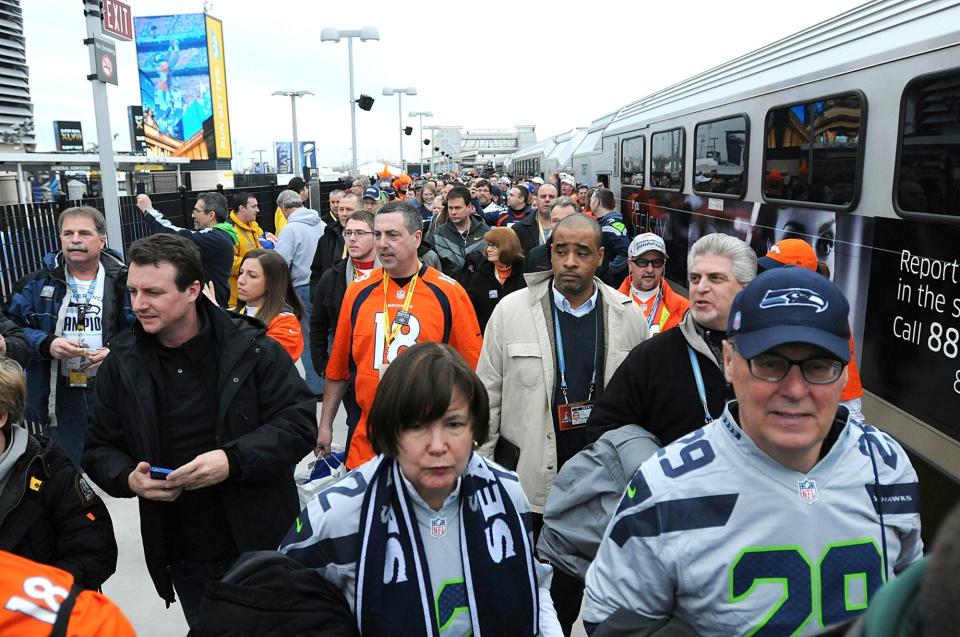
There is perhaps no better-known blemish on NJ Transit, the statewide transportation agency, than its performance after the Super Bowl in 2014. More than 33,000 fans left the stadium after the game to take the Meadowlands rail spur that connects MetLife Stadium with the Secaucus Junction station.
Many, especially in light of the World Cup news, are quick to blame NJ Transit for those past mistakes. However, the rail spur actually performed as expected for the Super Bowl in 2014. It shuttled more than 10,000 fans an hour, as designed.
But when it was crushed with three times that number of fans — well beyond pre-game projections — it took three and a half hours to transport everyone back to Secaucus.
More: How to get fans to MetLife for World Cup? NJ Transit will spend $35M to design bus lane
The constraints of the system have been felt at other MetLife events, like the Romeo Santos concert, where more people took the Meadowlands rail line than it can handle, leading to long waits and crowds.
But in the summer of 2023 — as MetLife was eyed as a finalist possibility for the World Cup — NJ Transit successfully handled a number of high-profile events, including concerts by Ed Sheeran and Beyonce, the Army-Navy football game and three nights of Taylor Swift concerts.
Hosting the World Cup in 2026 will test the entire NJ Transit system — and its connections with the region’s vast public transportation network — like never before, as soccer fans from around the world flock to attend seven games and the final over several weeks.
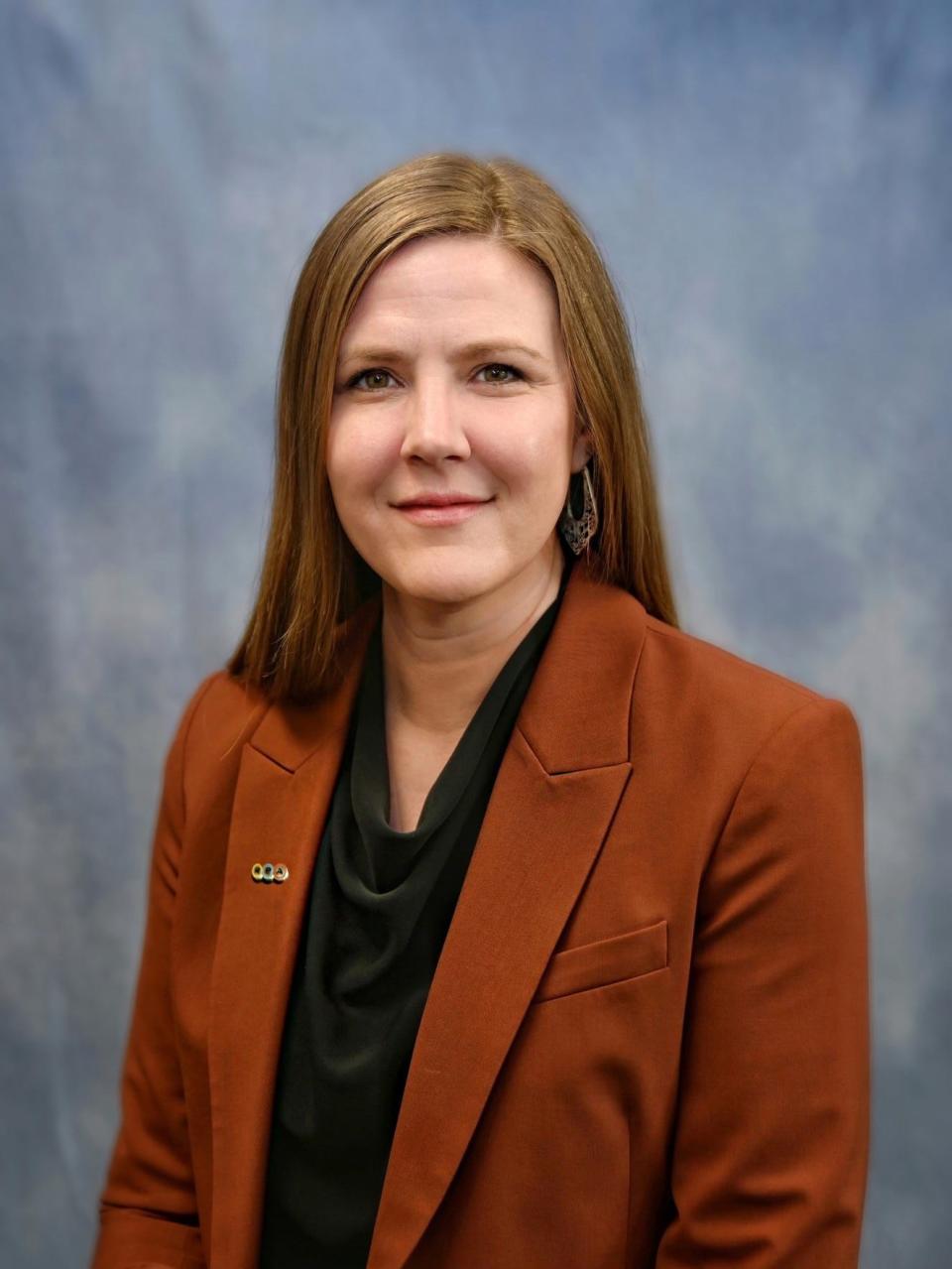
“We have to figure out how to best spread that density across roads, bridges, trains, buses and light rail,” said Zoe Baldwin, New Jersey director for the Regional Plan Association, a nonprofit that studies and advocates for mass transit in the tri-state area.
“There are a lot of events that go on that are in addition to the official games, so we also need to be cognizant of the fact that to make this an easy and fun trip where people want to stay in New Jersey, we need to make sure there’s functional service on off hours,” Baldwin said.
Dedicated bus lane between MetLife and Secaucus
NJ Transit began workshopping ideas to augment or expand its Meadowlands rail line in 2019, an effort that sparked a plan to construct a dedicated bus, bike and pedestrian lane between the stadium and Secaucus Junction.
The state Department of Transportation, through NJ Transit, recently paid $35 million to HNTB Corp. to move forward with design and engineering work, to be finished in early 2025.
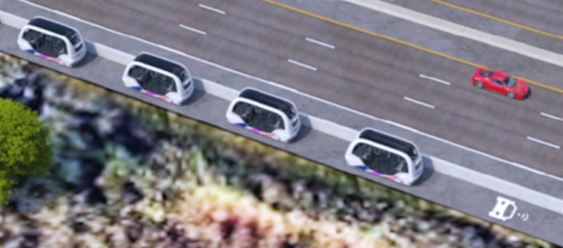
Construction is expected to take about a year, according to NJ Transit spokesman Jim Smith, though there are no cost estimates yet for construction or the purchase of vehicles for the new transitway.
“We look forward to not only delivering a seamless transportation experience for fans from around the globe, but we want everyone to know that the fan experience will begin as soon as they board their NJ Transit train or bus,” said NJ Transit President and CEO Kevin Corbett.
Corbett has said his team will determine “how short-term enhancements can provide long-term improvements that extend well beyond 2026.”
More: NJ Transit riders say Murphy needs to provide more state aid to beleaguered agency
In order to achieve that, Baldwin said NJ Transit must have a dedicated funding source to expand and improve its day-to-day service — with tech offerings, on-time performance and better signs — not just service to the Meadowlands.
“The bad experience of the Super Bowl looms very large in New Jersey’s collective unconscious,” Baldwin said. “We need to make sure that the state lives up to its commitment to fund NJ Transit in advance of this because the worst thing that could happen is to have all of these guests from around the world stuck with our preventable and routine transit issues that arise from an underfunded system.”
How much revenue for local economy?
With fans from around the globe descending on the region the World Cup will generate revenue, but who will benefit from the windfall is unclear. Murphy estimates that the state will see billions of dollars in revenue. Kirkos and his Meadowlands Chamber of Commerce is focused on making sure the area doesn’t miss any opportunities.
“We in New Jersey did a terrible job at marketing the state” when MetLife hosted the Super Bowl, he said, and effort needs to be made to bring attention to New Jersey from the start around the World Cup.
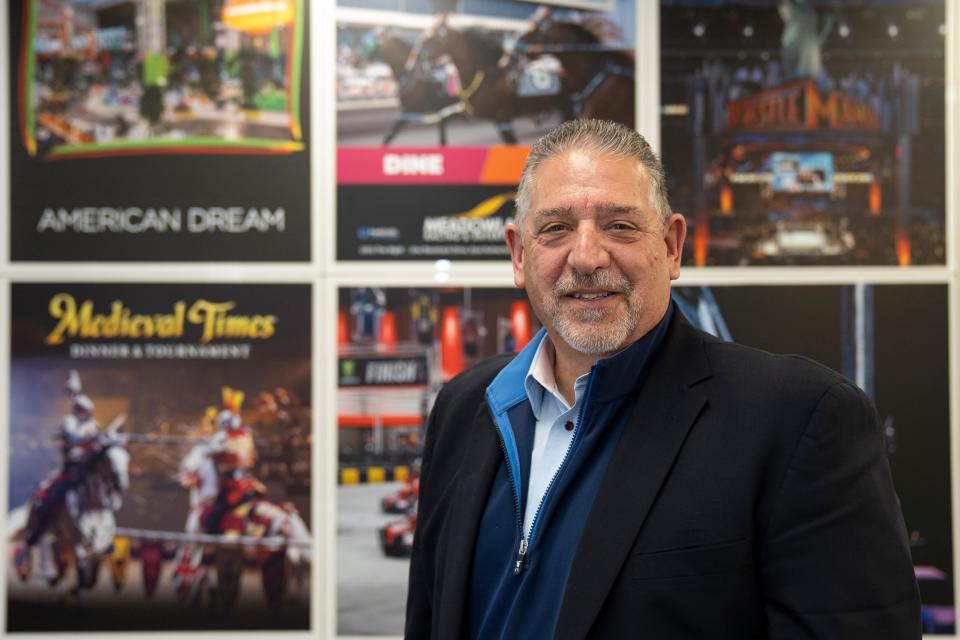
Kirkos said that as part of the bid, FIFA made certain requirements, including setting aside blocks of rooms at area hotels for staff, officials, teams and other personnel. The chamber helped to secure the contracts and the hotels to meet that commitment.
He said some Meadowlands hotel properties are afraid of locking in a room block and then seeing the reservations get canceled at the last minute, losing potential revenue.
“I think that's where the governor's office and the leadership on the New Jersey side comes into play,” Kirkos said. “Because the governor himself is all in on this, I don't see those kinds of things happening. I think he's made it perfectly clear to FIFA and the host committee has made it perfectly clear to FIFA that that we need that activity.”
He’s also working to make sure local mayors and local communities take advantage of having the World Cup in their backyards by designing local events for people who love soccer.
Kirkos noted, for instance, the success of a tailgate event held in East Rutherford during the Super Bowl in 2014. It drew thousands, and was held near the train station so people without a car could participate.
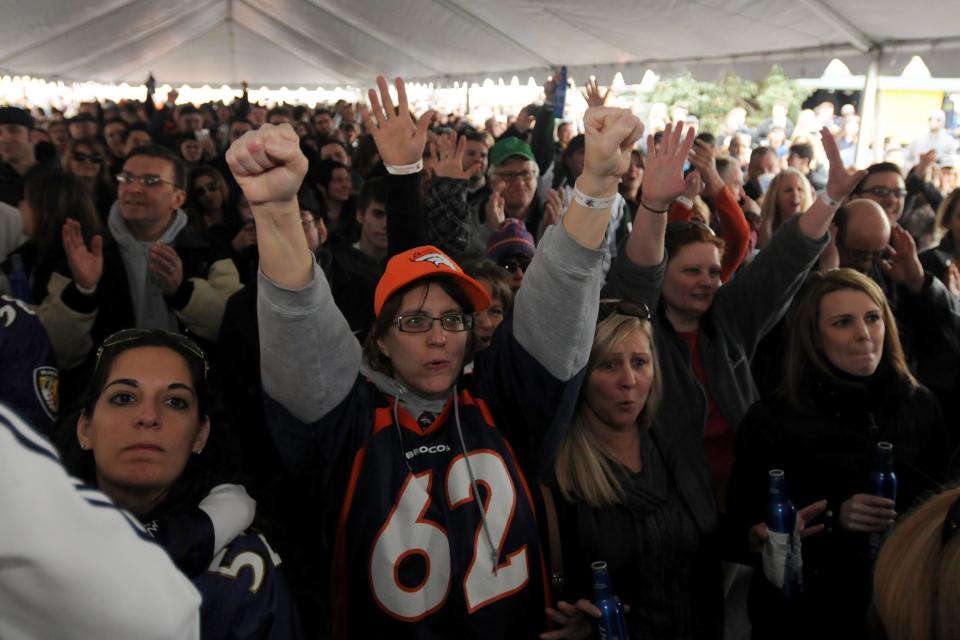
“It was an amazing way to showcase the community and have the community embrace the Super Bowl,” he said.
The marketing campaign will include everything from social media and billboards to print and digital advertising to make sure people know what the area has to offer.
Ensuring a great fan experience
Making sure that people who visit North Jersey for the World Cup have a great experience is key to driving revenue and securing future hosting opportunities for the region.
That means emphasizing local and state events beyond just the matches inside the stadium. With stadium capacity at about 80,000, even over the course of eight games that means only 640,000 will get tickets.
In 2014, the main NFL experience was Super Bowl Boulevard, held in Manhattan.
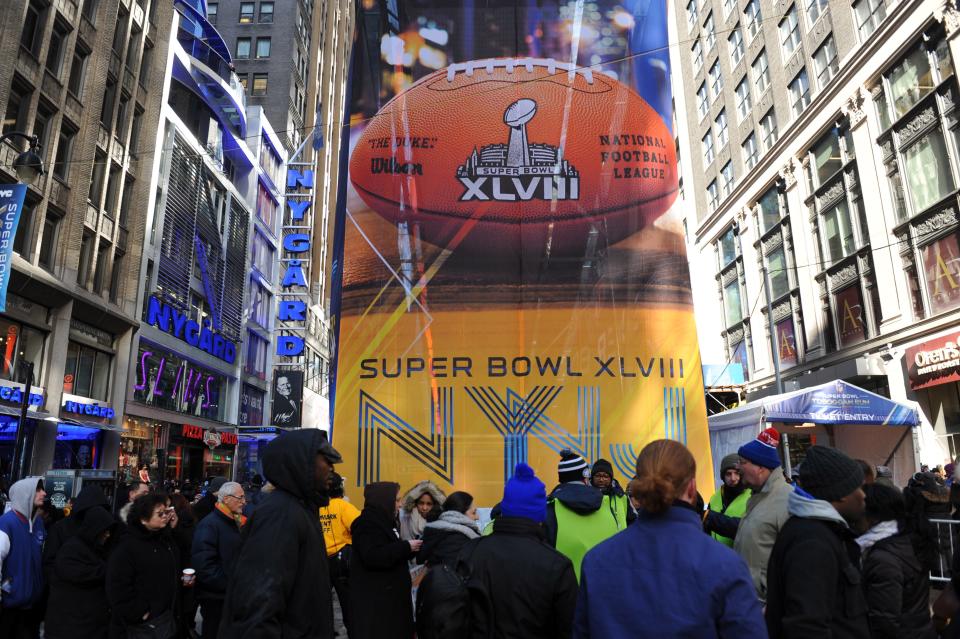
The Meadowlands didn’t — and still doesn’t — have a venue large enough to accommodate an event like that, Kirkos said, but that doesn’t mean there aren’t other places and events to enjoy, including the American Dream megamall adjacent to MetLife stadium and the shops and dining options along main streets of nearby towns.
Casella said the East Rutherford tailgate in 2014 did well after closing down local streets, bringing in local bands and hosting watch parties at local restaurants.
Other North Jersey towns, including Secaucus, Wood-Ridge and Ridgewood, also drew crowds by hosting events. Kirkos expects to see more communities take advantage in 2026, including those along the Hudson River and surrounding Liberty State Park.
Murphy noted that the World Cup matches will occur in the “sweet spot of summer,” which will help the communities surrounding the stadium and throughout New Jersey as fan fests “both large and small” will likely draw crowds.
This article originally appeared on NorthJersey.com: World Cup 2026: Can NJ learn from Super Bowl errors at MetLife?

